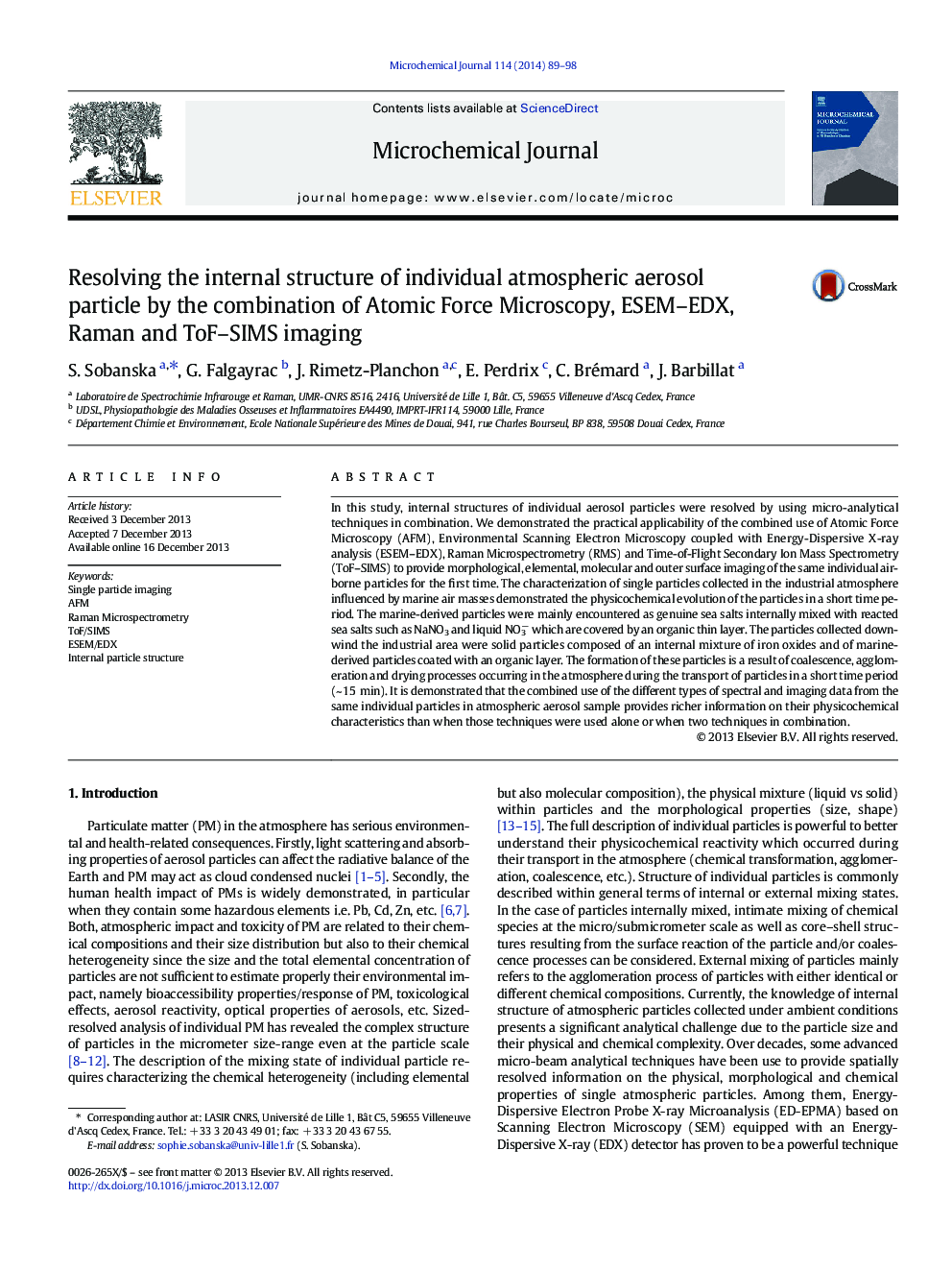| Article ID | Journal | Published Year | Pages | File Type |
|---|---|---|---|---|
| 7643148 | Microchemical Journal | 2014 | 10 Pages |
Abstract
In this study, internal structures of individual aerosol particles were resolved by using micro-analytical techniques in combination. We demonstrated the practical applicability of the combined use of Atomic Force Microscopy (AFM), Environmental Scanning Electron Microscopy coupled with Energy-Dispersive X-ray analysis (ESEM-EDX), Raman Microspectrometry (RMS) and Time-of-Flight Secondary Ion Mass Spectrometry (ToF-SIMS) to provide morphological, elemental, molecular and outer surface imaging of the same individual airborne particles for the first time. The characterization of single particles collected in the industrial atmosphere influenced by marine air masses demonstrated the physicochemical evolution of the particles in a short time period. The marine-derived particles were mainly encountered as genuine sea salts internally mixed with reacted sea salts such as NaNO3 and liquid NO3â which are covered by an organic thin layer. The particles collected downwind the industrial area were solid particles composed of an internal mixture of iron oxides and of marine-derived particles coated with an organic layer. The formation of these particles is a result of coalescence, agglomeration and drying processes occurring in the atmosphere during the transport of particles in a short time period (~Â 15Â min). It is demonstrated that the combined use of the different types of spectral and imaging data from the same individual particles in atmospheric aerosol sample provides richer information on their physicochemical characteristics than when those techniques were used alone or when two techniques in combination.
Keywords
Related Topics
Physical Sciences and Engineering
Chemistry
Analytical Chemistry
Authors
S. Sobanska, G. Falgayrac, J. Rimetz-Planchon, E. Perdrix, C. Brémard, J. Barbillat,
